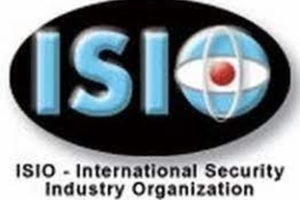CAPSI, ISIO and SASA aim to curb collateral damage biological threat and tailing threats

CAPSI [Central Association of Private Security Industry], ISIO [International Security Industry Organization] and SASA [Security Association of South Africa] are on mission to curb the collateral damage of the active mutating biological threat and tailing threats.
The health community has sent the protocols for infection testing (chemically and electronically), the social movement of people and hygiene. It is in-fact the private security industry that implements the protocols on the ground by investing in the equipment, manages the flow and behaviour of social movement besides ensuring that people sanitize before entering sites.
However, the private security industry does much more, because there is crime related to the pandemic and the economic meltdown that is resulting from such, definitely causing more havoc to the mix.
The private security industry, being frontliners, do experience aggressive and violent incidents that leads to life impacting and deadly outcomes. The medical fraternity do nurse infected people and therefore use appropriate protocols, but the security practitioners on the ground have no idea who is infectious, and a massive risk to the public at large.
The alliance is working together on a goal directed plan of action that is designed, by capacity building specific stake holders that will drive the methodology world-wide. In the understanding that the entire world needs to be inoculated at the same time, with the same potency of vaccine, dictates that the entire security force that numbers in the millions must work together at the same time, using the same security protocols for biological threat security.
Based on intensive research and application, the respective security industries will be promoting security protocols for biological threat security. These protocols are geared towards procedure of using the technology, equipment besides layering the workforce on the ground by skillsets.
The Chairman of CAPSI, Mr Kunwar Vikram Singh states “ This collaboration between CAPSI, ISIO and SASA to protect humanity from biological weapons in the form of deadly viruses will prove a most serious life saving initiative which governments and corporate must endorse and apply immediately. CAPSI has already discussed this dangerous aspect with the Indian Ministry of Home Affairs and also signed a MoU with Rashtriya Raksha University (National Security University), to commence Bio Security education. This trustworthy HIM tool with security protocols for biological threat security is required to secure and limit the level of collateral damage’’.
The Chairman of SASA, Mr Franz Verhufen, states that it is of critical importance that the private security industry “leads from the front”, thereby protecting the national economy and the entire populations of their respective countries, which can only succeed if they, as a whole, work together in the campaign to reinforce the national governments in their respective countries, to curb and eliminate this deadly threat.
SASA and its members, who collectively employ in excess of 100,000 registered security officers, believe that, with effective technology and using security protocols for biological threat security, they can definitely make a significant contribution in this battle against the pandemic.
Juan Kirsten, Director General of ISIO firmly says ‘’the Private Security Industry is larger than any navy, military unit, or policing agency, collectively using the same protocols, and therefore must be utilised to its full potential by being goal directed and working in concert because it is already doing the job on the ground.’’
The philosophy and methodology is outlined in the tools that can be found on https://www.human-investigation-management.com/cbts-certified-for-biological-threat-security which is endorsed by CAPSI, ISIO and SASA.


